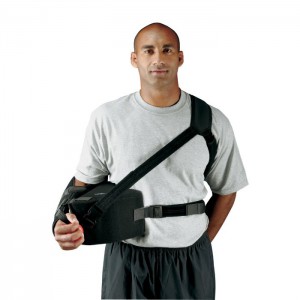If you are struggling with lower back pain that radiates down your leg, you might have hit the internet searching for answers, only to find the terms “sciatica” and “herniated disc” discussed frequently. This is because both conditions can cause debilitating back...
You open your eyes, stretch, and sit up, ready to start the day. But the moment your feet hit the floor, a sharp or aching pain shoots through your heels, arches, or the balls of your feet. Morning should feel refreshing, yet instead, you find yourself hobbling to the...
Are you a fitness enthusiast or a dedicated athlete who has suddenly been sidelined by a nagging, persistent pain in your calf and ankle? That sharp or aching sensation that flares up during or after activity could be the result of Achilles tendonitis. The Achilles...
Athlete’s Guide to Shoulder Surgery

In the competitive world of amateur and professional sports, winning or losing is literally determined in a matter of split seconds. Boxers thus push themselves harder so they can punch harder and faster; racquet game players train for speed and power too; weightlifters want to be stronger and fitter… and the list goes on.
However, most of the professional athletes are near their optimum performance level. This can be evidenced by the fact that an amateur tennis player who has not played for long can make gains in accuracy of up to 5-10% after training for 2-3 weeks. A professional tennis player has to train with the same intensity as the amateur player for 2-3 months for about 1% gain in accuracy. Since any sport is usually most competitive at the professional level, most athletes over-train in a bid to improve their performance faster. This can result in shoulder injuries.
Some sports require overhead motions and throwing such as volleyball, javelin throwing, lawn tennis, baseball and cricket. This places tremendous strain on shoulder joints and muscles and is exacerbated by the fact that the motion is usually repetitive. The shoulder joint happens to be quite unstable, which is necessary to allow for the wide range of motion it has.
This repetitive strain and overuse of shoulder joints may lead to one injuring their shoulder. Common injuries resulting from overhead motions and throwing include SLAP tears, rotator cuff tears and tearing of the tendons among others. Due to the fact that it happens over a long period of time, such injuries may only be corrected by shoulder surgery.
Shoulder injuries should be looked at by an orthopaedic professional as soon as possible. This is due to the fact that the earlier it is caught, the less damage one inadvertently causes themselves. Early treatment and diagnosis stop the spread of the injury and if caught early enough, non-surgical remedies can be used such as rest and steroid injection.
For athletes suffering from constant shoulder dislocation, keyhole surgical repair can be used to prevent bigger complications in the future. It is less intrusive, less painful and results in minimal inflammation. This results in an athlete losing less time not playing and prevents more serious, future injuries.
When preparing for surgery, an athlete should do exercises before the surgery, known pre-hab. Pre-hab has been shown to increase the recovery rate. Pre-hab should be undertaken for 6 weeks or longer; the longer the better.
However, athletes should keep in mind that there are some types of exercises that are not suited for someone with a shoulder injury. They should therefore consult with a doctor or orthopaedic professional who can help them come up with a list of harmless activities and a schedule. Once the schedule has been provided, an athlete should stick to it. Specifically, while it is advisable to stop when they feel too much discomfort or pain, they should not overdo it even if they are feeling great.
Patience is very important for a full recovery after shoulder surgeries. In most cases, the arm ends up being immobilized for several weeks before passive movement can be started. After a while, active movement will then be commenced to strengthen the shoulder as well as make it flexible.
This can be extremely tiring for athletes used to high performance and a rigorous routine. However, if one wishes for full and fast recovery, sticking to the program set out by an orthopaedic professional is the only way to go.

